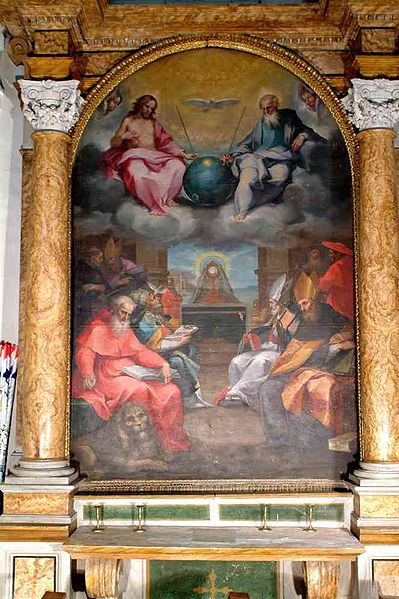I know what you come here for. For Dracula or Cthulhu or in some cases both. So that’s why this month we’re going to give you a different kind of both. Yes, it’s time for that Moon Dust Men–School of Night crossover that you demanded! Maybe not you, specifically. Maybe just Michael Grasso. But anyhow, settle in for the amorphously-demanded thriller skeleton to Celestial Spheres, or, The Immanence of the Holy Sputnik. As an added bonus, this is what a Ken-designed scenario looks like before I run it the first time.
Part One: Moon Dust Men: Right Around Now
Hook: The Moon Dust Men get spotty telemetry on an incoming object with a spherical radar reflection, heading for the Tyrrhenian Sea near Elba. A quick stage to an American aircraft carrier in the Med, a hop to Elba, and they’re ready for recovery duty.
Wakeup: A Soviet submarine is on site, with a team competing for the object. Perhaps it’s their opposite numbers in Setka-MO!
The First Reveal: The Moon Dust Men defeat the Soviets and recover the object, which is a surprisingly intact — almost as though the object didn’t actually fall through most of the atmosphere — replica of Sputnik 1, which supposedly burned up in orbit in 1958. Weirder yet, it has a large-caliber (.60) bullet hole in its lower quadrant. (Possibly, the metal of the object doesn’t quite match the original: iridium instead of titanium, that kind of thing. Or not.)
Blowback: A KGB “Blue Star” psychic heads up a team of Directorate 13 wet-workers to ice the Moon Dust Men and take the sphere back. This is not normal procedure: the Soviets must really want this thing. Perhaps the Russians even get it back, though not without leaving some clues behind.
The Twist: Further investigation (dying words of the psychic, ticket stub found in the KGB safe house, Ufology spend, Interpersonal ability with a lovely guest-star art historian) leads the Moon Dust Men to nearby Montalcino, Italy, where they discover “The Disputation of the Eucharist,” by Ventura Salimbieni. Painted between 1595 and 1600.
Part Two: School of Night: Sphaeris ex Caelis
Hook: The Night Scholars hear that the Jesuits in England have begun communicating with a “sphere from heaven” and receiving their marching orders through it. This presents a clear and present danger to the realm!
Curtain: Art History notes that the “celestial sphere” or “sphere of heaven” is a common motif in Renaissance art, indicating God’s control of, and complete knowledge of, the world. Often God (or sometimes Christ) are shown with slender scepters to control it with. No sightings of this “sphere” in England can be found.
Wakeup: The Jesuit network pushes back, sending bravos and pursuivants after the Night Scholars. They seem oddly able to predict where the Night Scholars will be.
The First Reveal: Having found the Jesuit mastermind by serially defeating his minions, the Night Scholars ransack his lodgings (either after killing him or after his amazingly lucky hairs-breadth escape) and find one of the slender scepters. It shortens in upon itself in an ingenious way that not even Thomas Hariot knows will be called “telescoping” in 200 years. This scepter provides magical connection enough to try summoning the sphere of heaven to see what blasphemy the Jesuits are dealing in.
The Twist: The summoning works, in a way — but the sphere is both more and less horrible than the Scholars imagined. It floats of its own and beetles into their minds. It seems to have an inhuman intelligence behind it, revealing uncanny future visions to them — although it addresses them in Russian! During the ceremony, it seems weirdly able to pass the magical barriers around it, vanishing only after a pistol shot wounds it.
Part Three: Epi-Logos?
The Moon Dust Men are left with an enigma. They can further investigate the possibility of the time vortex or rift that sent Sputnik back to 1595 and forward again to 1979. Is that the only Sputnik duplicate out there? Did the Soviets get time-travel telemetry in 1958 from Sputnik 1 and now need only a third data set to triangulate it and develop temporal technology themselves? Are there temporal aliens among us? (If the sphere’s metal was different, perhaps they built a duplicate Sputnik of their own and sent it back as a message.) The GM can introduce plenty of weird time-slip stuff to indicate that the sphere has opened a bit of a wound in reality by coming through — something like a bullet-hole in reality’s lower quadrant, perhaps.
The Night Scholars may never know what they’ve stopped, or they may start seeing other strange mechanical devices and lights in the sky infest their world. The artistic community discovers Salimbieni’s sketches when he makes them in 1595, and they reach the Scholars — perhaps a trip to Italy is in order? Salimbieni is closely tied to the powerful Cardinal Bevilacqua and the Knights of the Golden Spur, the pope’s mysterious Golden Militia selected from artists, courtiers, and soldiers alike — is this the opposite number to the School in the Vatican? Many threads lead off this tapestry.
It’s up to the GM whether the Sputnik time-loop is a one-off mystery or the opening gun of a new series arc for either campaign. Perhaps the links continue — did Anthony Blunt (royal art historian and KGB spy) send the Soviets the secret artistic keys to time travel or demonic prophecy or both? He’s still in Britain in the 1970s after his secret confession in 1966 — perhaps the Moon Dust Men can break him down and get him to reveal the real truth.




